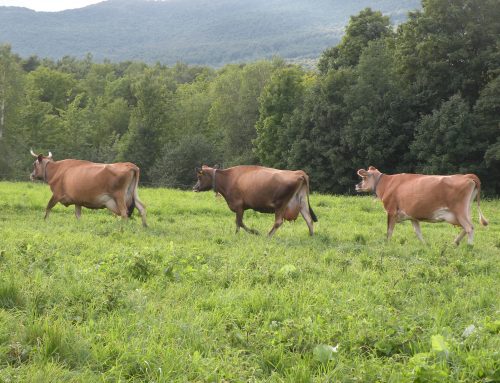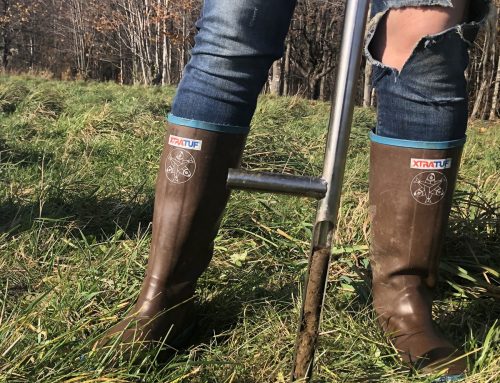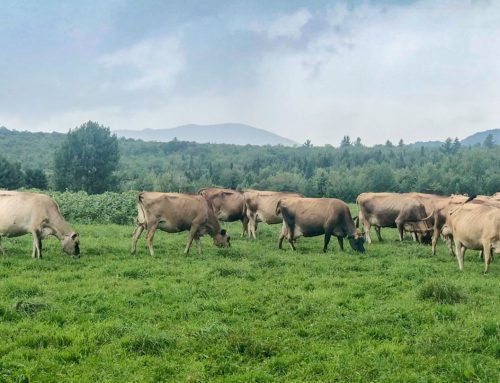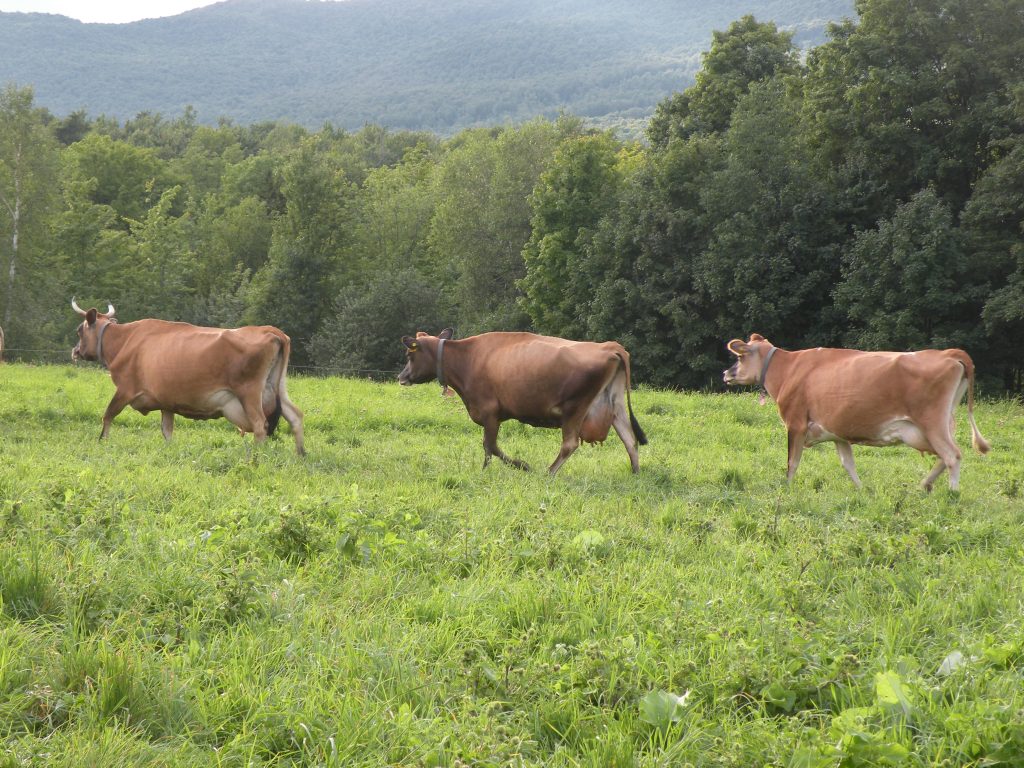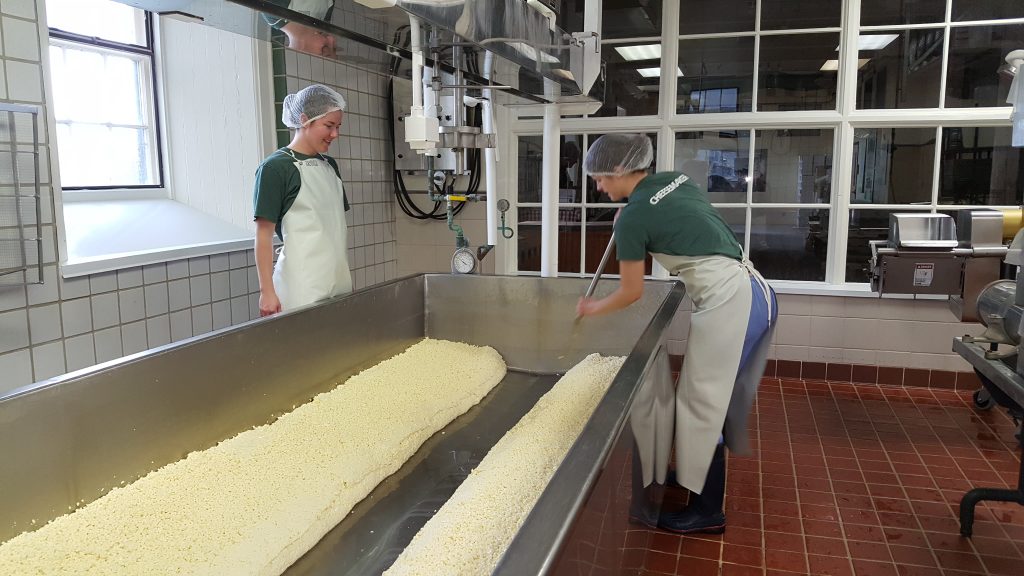Some Background on Grass-Fed Dairying, its Health Benefits and Why Butterworks Dairy is even more Creamy and Nutritious than Ever!
One hundred per cent grass fed dairy products (aka “grass milk”) are a relatively recent arrival to the dairy industry. The health benefits of 100% grass fed dairy have long been espoused by The Weston A. Price Foundation and others. When cows live on a diet from which grain has been eliminated, the omega 3 fatty acid profile increases in their milk. Grass fed dairy and beef have become popular because of the presence of conjugated linoleic and linolenic acids (CLA’s) in butterfat and meat. Higher CLA’s reduce one’s risk of cancer and other diseases. CLA’s are naturally occurring trans saturated fats mostly found in grass-fed meat and milk. When cows on pasture eat grass and other green plants, their gut flora convert Polyunsaturated fatty acids into CLAs. In milk, there’s also another source: an enzyme in cow’s mammary glands convert vaccenic acid (another type of fatty acid) into CLA.
At Butterworks Farm we have long been interested in no grain dairy farming. For the past forty years we have been grain growers as well as hay producers. Cereals (oats, wheat and barley) and row crops like corn and soy have fit neatly into our crop rotation with grasses and legumes. The straw byproduct of the grain is just as important to us for bedding our animals as the grain has been for feeding them. We ground the grain into a dairy ration and fed our cows grains from our own farm as opposed to buying it from the “mill”. Over the years, as our soil health and fertility has increased, we have improved the quality of our forages (grass and legumes) to the point where we were able to reduce the amount of grain fed to our cows to 4 ½ pounds per cow at each milking. Standard fare on most high production dairy farms is one pound of grain for every three pounds of milk produced. Our ratio was closer to 1:5.
Early in 2016, we began to conclude that if the quality of our forages was so superior, we could stop feeding grain to our cows without suffering adverse consequences. In early April, we began reducing the amount of grain we fed at each milking. By the end of the month, we were down to less than three pounds per day per cow. On May 1st, we went cold turkey and joined the ranks of 100% grass fed dairy. This was an ideal time to make the transition because the cows had just left their winter quarters and started grazing virgin pasture. The first growth of grass and legumes is absolutely the best and highest quality forage a dairy farmer will produce during the entire pasture season which lasts until late October.
We were delighted with our cows’ performance without grain on the new pasture. For the first two weeks, milk production held at 45 pounds per cow. A dairy cow needs to eat 2-3% of her body weight each day to give milk, maintain her body condition and to reproduce. Dairy nutritionists refer to this phenomenon as dry matter intake. The value of feeds is determined on how much actual dry weight is being consumed by the cow. For instance, if a cow consumes 100 pounds of lush pasture that is 85% moisture, she is only consuming 15 pounds of dry matter. Different breeds of cow have different dry matter intake requirements. Jerseys are smaller than Holsteins and consume less feed. Our Jerseys need somewhere between 36 and 40 pounds of dry matter a day and it now all comes from forages in the form of pasture and hay.
The basic premise of 100% grass fed dairy is that the dry matter from grain has to be replaced with hay and pasture. This is no small task when one considers that nine pounds of grain at 13% moisture is close to eight pounds of dry matter. Consider replacing that eight pounds with forages that have moisture levels of 80 to 90%. It takes close to 100 actual pounds more of hay or pasture to replace the nine pounds of grain that is no longer being fed!
First and foremost, we have had to increase the size of our grazing paddocks that the cows are given fresh every twelve hours. We have begun feeding stored forages (baleage) in the cow stable during milking time. Cows must have ample feed in front of them at all times whether they are out on grass or tied in a stall to be milked. Until relatively recently, we never realized how much we had been getting out of that nine pounds of grain per day per cow. All in all, we now know that it will take about 20% more land per cow to be 100% grass fed. Long time hay fields will no longer be mowed and will be grazed instead. Land that grew a rotation of corn, soy and cereals will now support lush, diverse hay crops.
A serious nutrition concern is the relationship between protein and energy in our cows’ diet. Protein represents the “grow feeds” and energy represents the “go feeds”. Cows need both in an equal balance. Unfortunately, it is much easier to achieve sustained high protein levels in farm produced forages than it is to consistently produce forage crops that are off the charts in energy. A lot of energy came from the grain that cows once consumed at every milking.
Our transition to 100% grass fed is well worth it. Despite the fact that we will need more land and sharpened management skills to do this, we are very happy to promote more grass and less grain (and subsequently less tillage) on the land that we steward. More grass means more fibrous root systems in the soil. Less grain means less tillage and better soil health. Less tillage means less burning of fossil fuels and less disturbance to the delicate balance of microorganisms in our soils.
Our primary goal in farming is to take more carbon dioxide from the atmosphere and through photosynthesis, lock it up in the Earth’s crust as humus and organic matter. Higher carbon levels in the soil are the number one weapon that we as humans have to reduce and eliminate the effects of a changing climate. We are excited to be trying something challenging and new. Our farming practices were already focused on mineralization and soil health which has built a vibrant farm organism. Our switch to 100% grass fed dairying is taking us to new levels. It is incredibly hard work, but so much fun and what we are learning we want to share with others in the process.
KEEP UP WITH BUTTERWORKS FARM
Sign up for our MOOsletter
The latest news, product announcements, and recipes directly to your inbox.

